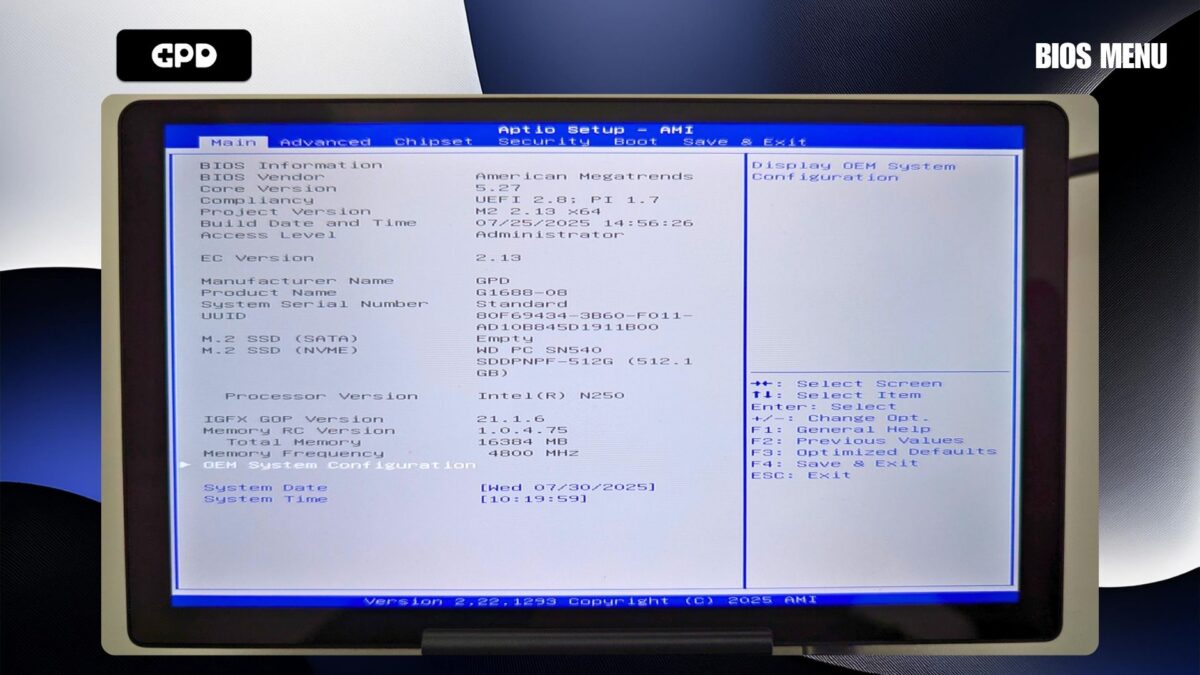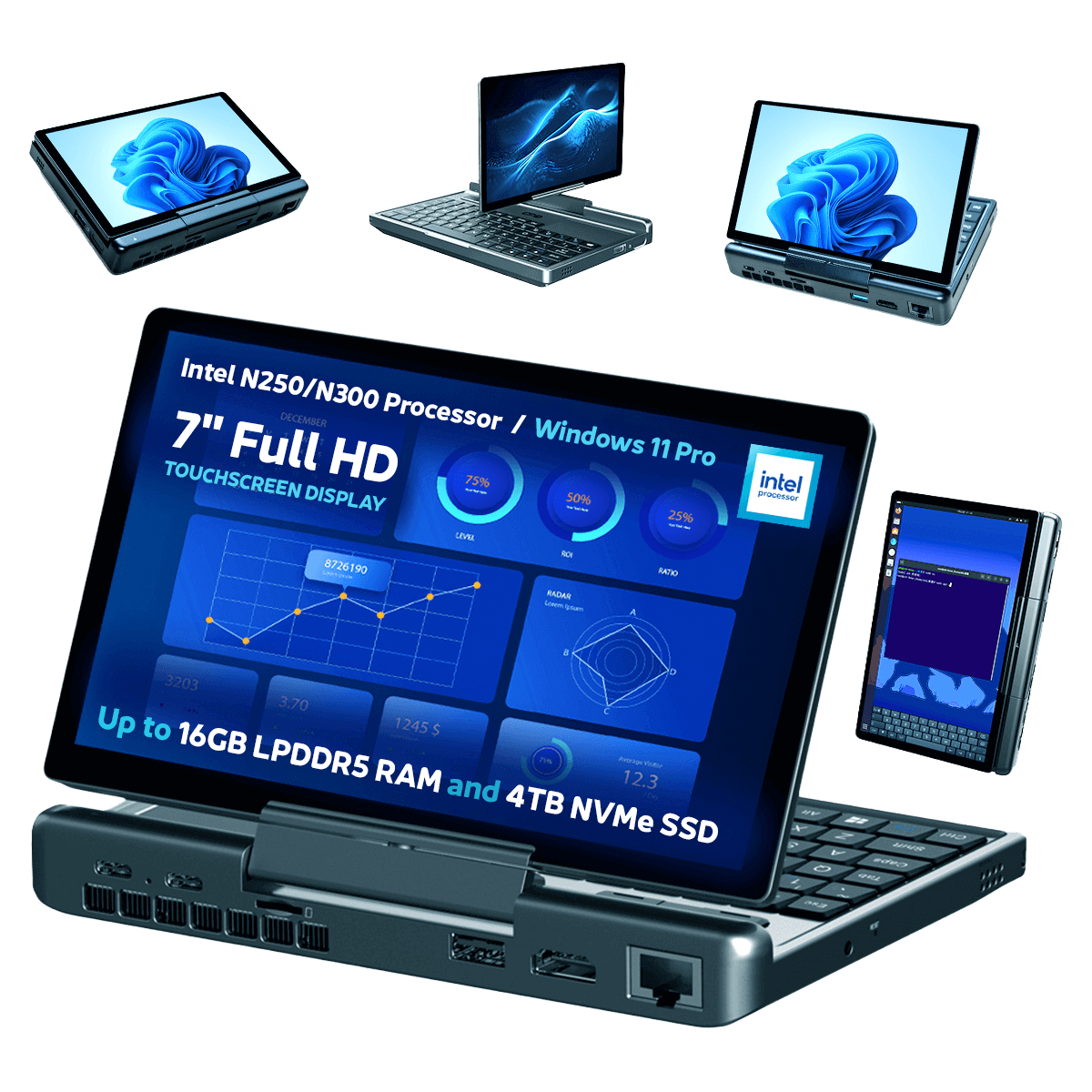Updating the GPD MicroPC 2 firmware is a simple procedure, but it can seem intimidating for first-timers. Our guide will take you through each step of the process.
The current version v2.13 has the following changes:
- Removed invalid DDR frequency settings
- Added TDP setting options for 6W, 8W, 10W, 12W; 6W and 8W support fan silent fan mode
- Enabled advanced options
Please note that while BIOS updating is generally fine, there are risks. Please ensure you follow all steps correctly, identify that you are installing the correct BIOS for your device, have a fully charged battery and also connected to a charger. Do not switch off the device unless instructed to. We do not accept responsibility if something goes wrong.
Ways to identify your CPU on your device:
- To access Task Manager, right click on the Windows Start icon and choose Task Manager from the list. Alternatively you can type Task Manager in the Windows Search Bar.
- You can find your CPU model in Windows quickly through Settings (About your PC), or the System Information app (msinfo32), all showing the processor’s name and spec.
Using Settings (Easiest for Windows 10/11)
Click the Start Menu (Windows icon) and type about.
Select About your PC from the results.
Look under “Device specifications” for the Processor entry, which lists your CPU model (e.g., Intel Core i7-10750H).
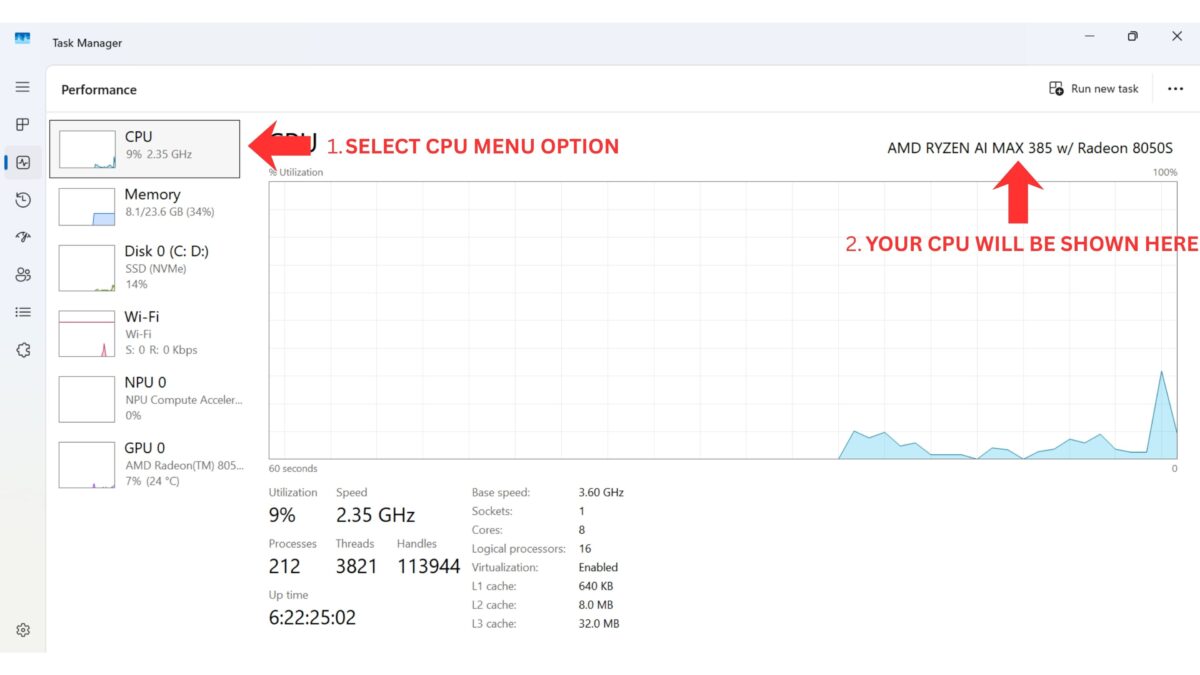
Check which BIOS version you are currently on #
Power on the GPD MicroPC 2 and immediately and repeatedly tap the Backspace key on the keyboard. Keep doing this until the BIOS menu is shown. If it boots to Windows, repeat the process again.
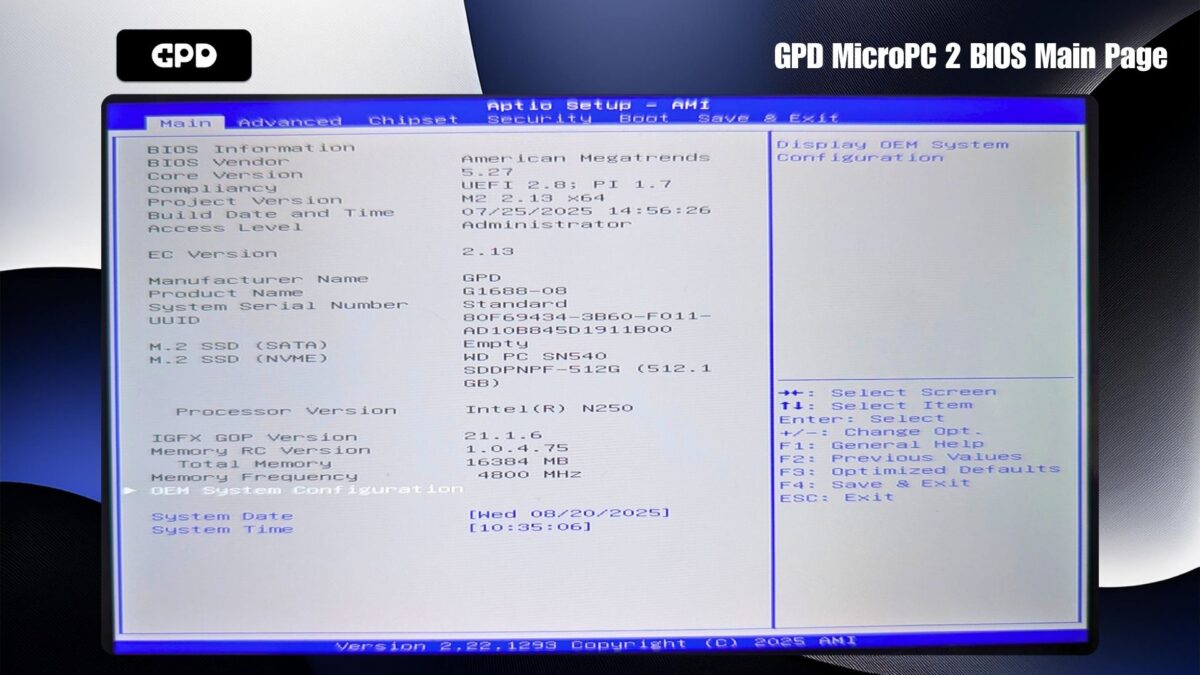
The BIOS version number will be displayed on the Project Version, in the above image it is 2.13 and the EC Version is 2.13, which is BIOS v2.13
Downloading the Update #
First, you’ll need to get the GPD MicroPC 2 BIOS update here. Be aware that some antivirus programs might incorrectly flag the file as a threat because its purpose is to modify the system’s BIOS.
Changes for v2.16
Fix touchscreen abnormalities under Linux
Fix abnormal behavior when Secure Boot is enabled
Fix reboot issue on first time wake up after BIOS reset
Preparation Steps #
Before starting the installation, ensure your GPD MicroPC 2 is fully charged and plugged into the power adapter. We also advise closing any open software, as the device will restart automatically once the update is done.
After downloading, extract the contents of the .zip file. You should see a file named something like BIOS_M2_V2.16_GPD.exe, although the version numbers may differ.
Installing the BIOS Update #
Run the .exe file by double-clicking it and approve any Administrator access requests that appear. After a moment, a command prompt window will open to begin the update.
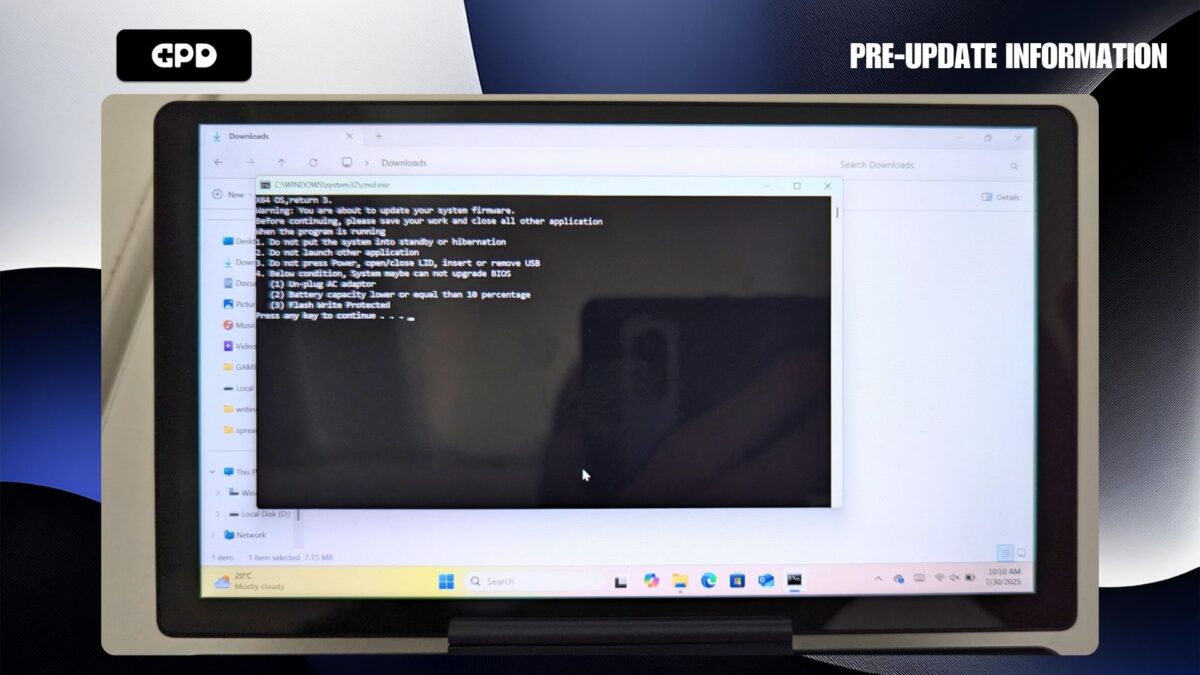
Before proceeding, please verify that your device’s battery is full and the power adapter is connected. When you are ready, press any key to initiate the BIOS update.
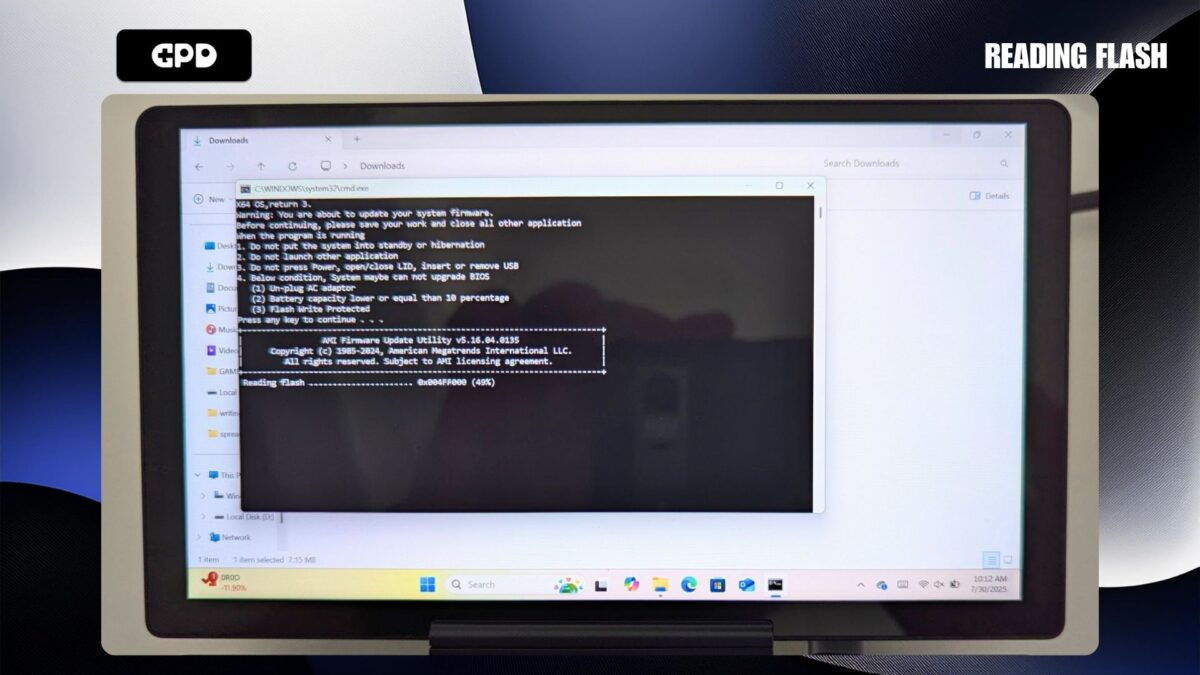
The update process should last between 3 and 5 minutes, during which you can observe the progress.
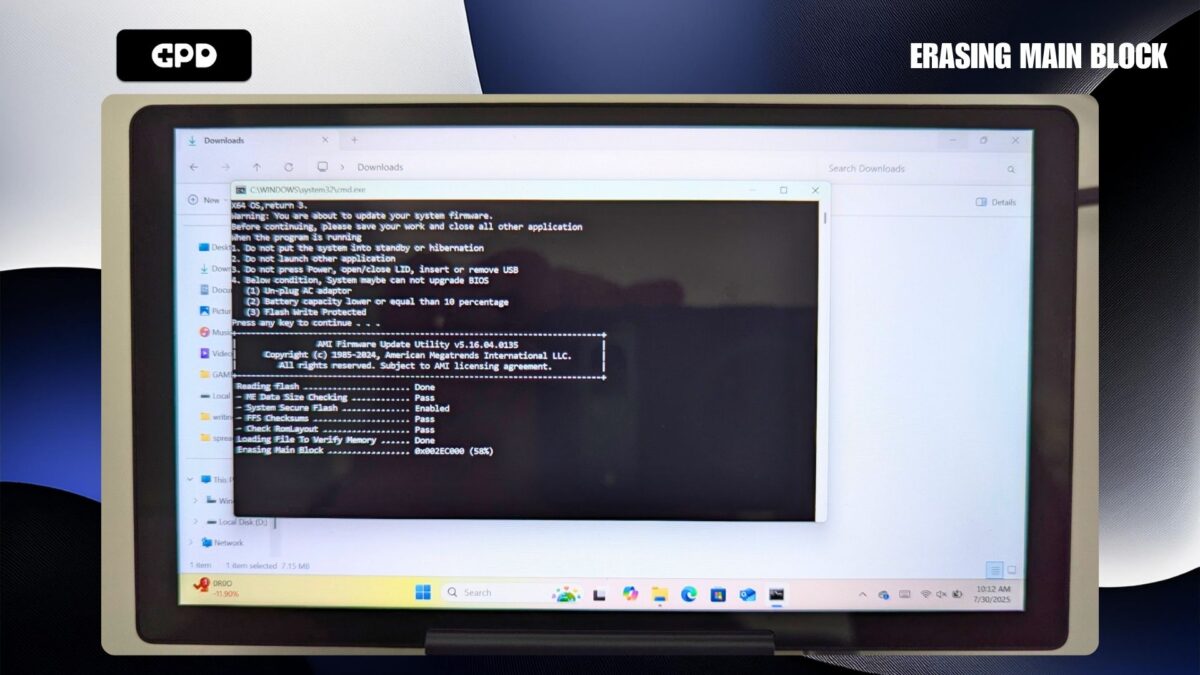
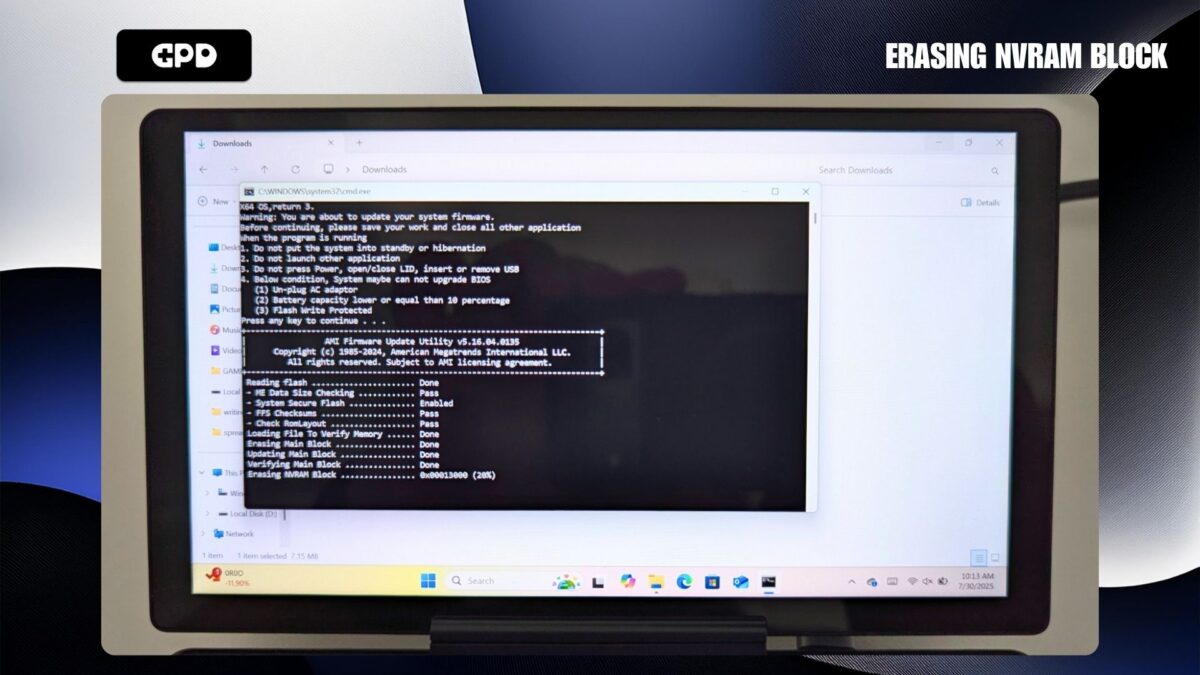
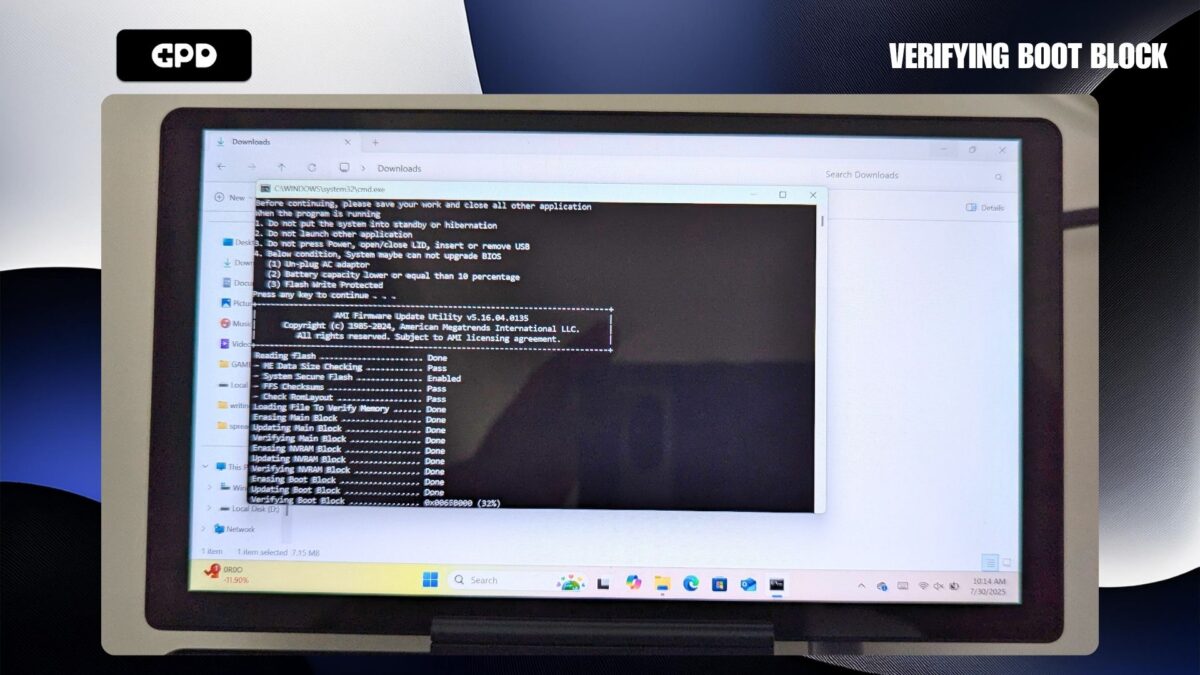
After a few minutes, a message will display on screen to confirm the completion of the first part of the installation.
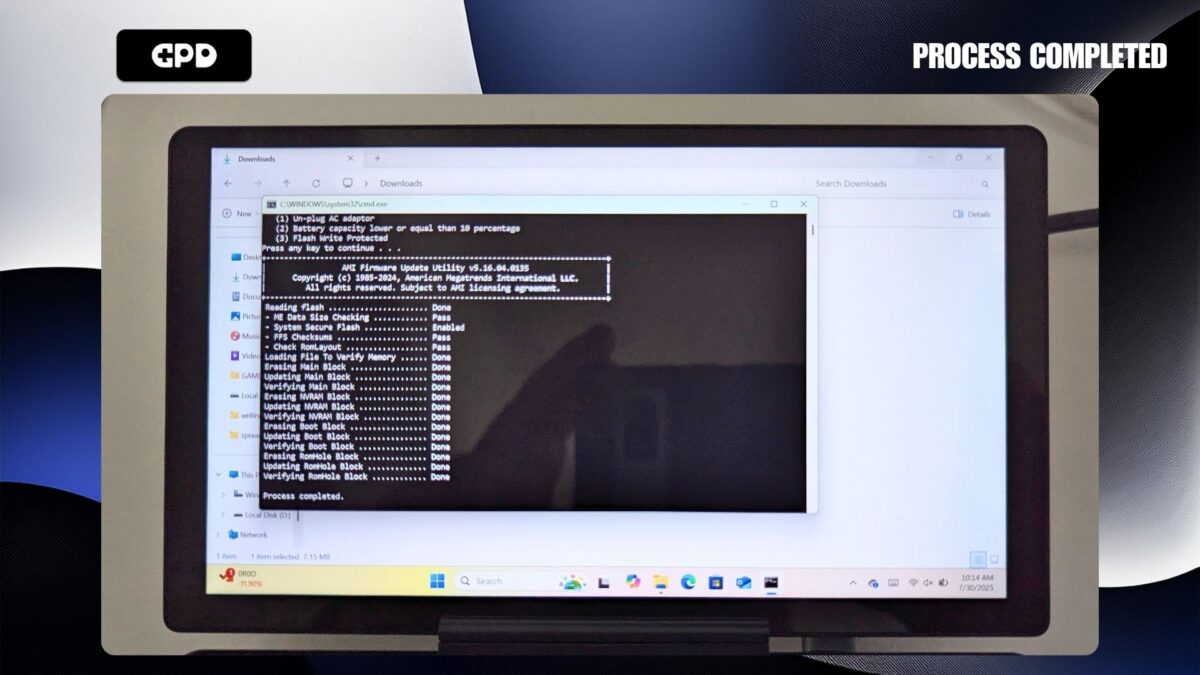
After a brief pause, the update will proceed to the BIOS flashing stage. You will see several messages quickly appear on the display, which will conclude with a ‘PASS’ message to indicate a successful installation.
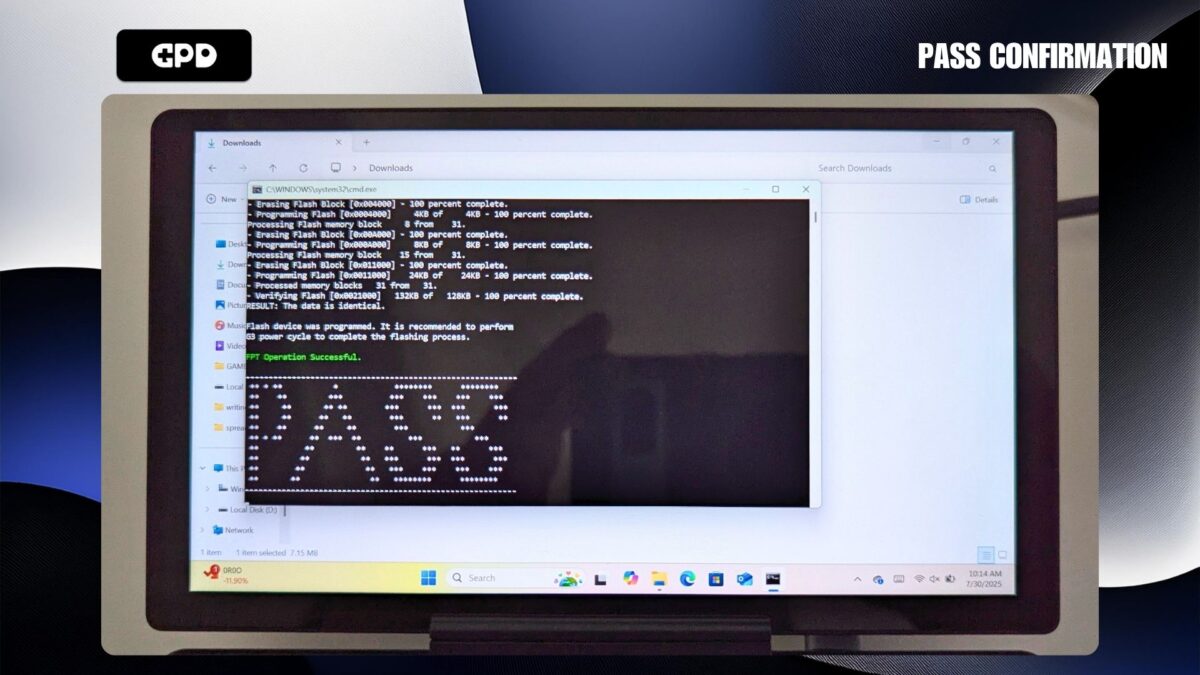
After a brief wait, you will receive a notification from Windows about an impending automatic reboot. No action is required; simply let the computer restart.
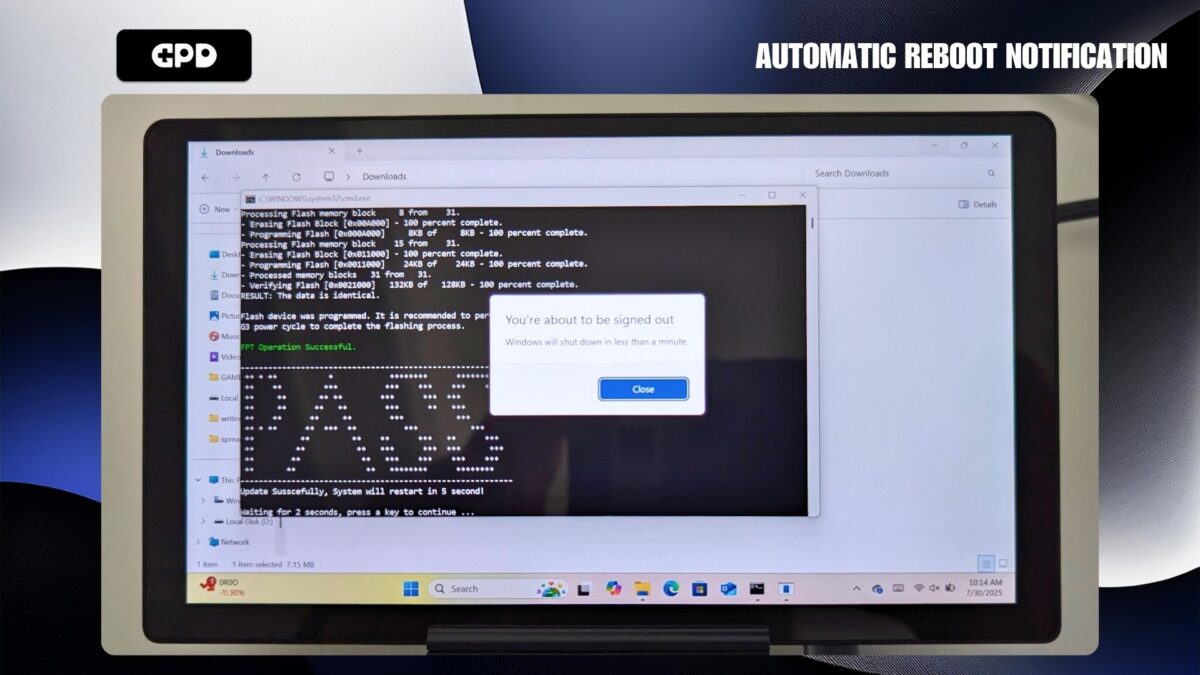
Allow a moment for the GPD MicroPC 2 to shut down and power off completely. Wait until the power LED is no longer lit, then press the power button to switch the device back on. Windows will then boot up as normal. Please be aware that the initial startup following a BIOS update can sometimes take a little longer than usual.
This concludes the BIOS update process, and your device is now ready for use.
To verify that the update was successful, you can enter the BIOS menu and check the number displayed next to the EC Version. This number should match the version you just installed (for example, 2.13).
